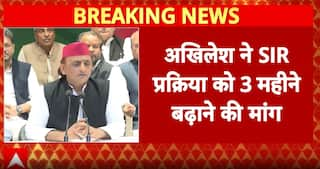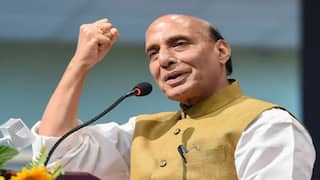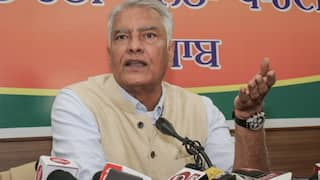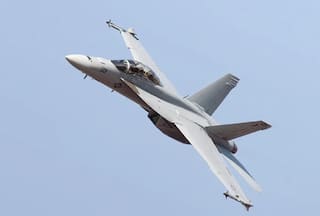Economic Survey 2024: Core Inflation Fell To 4-Year Low In FY24
Economic Survey 2024: Food inflation has been a global concern over the past two years, exacerbated by challenges within India's agriculture sector, such as extreme weather events

Economic Survey 2024: Union Finance Minister Nirmala Sitharaman Presented the Economic Survey 2024 ahead of the Union Budget 2024 announcement on Tuesday, July 23, in parliament on Monday. The survey highlighted that in the fiscal year 24-25, proactive policy interventions by the central government and price stability measures implemented by the Reserve Bank of India helped stabilise retail inflation at 5.4 per cent, the lowest level recorded since the pandemic.
Core Inflation Fell 4-Year Low
In FY24, the decrease in retail inflation was primarily driven by a decline in core inflation across both goods and services categories. Core services inflation reached a nine-year low during this period, while core goods inflation dropped to its lowest point in four years, shows the survey.
Throughout FY24, the inflation rate for core consumer durables decreased due to improved supplies of essential raw materials to industries. This marked a positive shift following several years of escalating inflation in consumer durables from FY20 to FY23.
In response to mounting inflationary pressures, the Reserve Bank of India (RBI) incrementally raised the repo rate by 250 basis points starting May 2022. As a result, core inflation declined by approximately 4 percentage points between April 2022 and June 2024.
Policy Interventions
In FY24, the global energy price index significantly declined, according to the economic survey. Simultaneously, the central government reduced LPG, petrol, and diesel prices, keeping retail fuel inflation subdued throughout the year.
In August 2023, domestic LPG cylinder prices were slashed by Rs 200 per cylinder across all Indian markets, initiating a period of deflation in LPG inflation from September 2023 onwards. Similarly, in March 2024, the central government reduced petrol and diesel prices by Rs 2 per litre. India's strategic policies effectively navigated global uncertainties, ensuring stability in prices despite prevailing challenges, states the survey.
Adverse Weather Effect On Food Prices
Food inflation has been a global concern over the past two years, exacerbated by challenges within India's agriculture sector, such as extreme weather events, depleted reservoirs, and crop damage. The survey revealed that these factors significantly impacted farm output and food prices, leading to food inflation rates of 6.6 per cent in FY23 and 7.5 per cent in FY24.
In FY24, unfavourable weather conditions further constrained food production. Specific issues included crop diseases affecting tomatoes, early monsoon rains, and logistical disruptions. Additionally, onion prices surged due to rainfall during the last harvest season, affecting rabi onion quality, delayed sowing of Kharif onion, prolonged dry spells impacting Kharif production, and trade-related measures by other countries.
The survey highlighted that the government implemented effective administrative measures despite these challenges. These included dynamic stock management, open market operations, subsidised provision of essential food items, and strategic trade policy measures, which helped mitigate the impact of food inflation.
Rural And Urban Inflation Widens
In FY24, most states and union territories saw reduced inflation rates, with 29 out of 36 recording rates below 6 per cent, aligning with the overall decline in all-India average retail inflation compared to FY23, reads the survey. States with higher food prices typically exhibit higher rural inflation due to the larger share of food items in the rural consumption basket. Moreover, rural areas show more significant inter-state variation in inflation compared to urban areas. Additionally, States with higher overall inflation rates tend to have a wider gap between rural and urban inflation, with rural inflation surpassing urban inflation.
Future Outlook
The short-term outlook appears positive, with the RBI projecting inflation to decrease to 4.5 per cent in FY25 and 4.1 per cent in FY26, assuming normal monsoon and no external or policy shocks. The IMF also forecasts inflation to be 4.6 per cent in 2024 and 4.2 per cent in 2025 for India. Additionally, the World Bank anticipates a decline in global commodity prices in 2024 and 2025, driven by lower energy, food, and fertiliser costs, which could reduce domestic inflation.
However, ensuring long-term price stability necessitates a forward-looking approach. Therefore, assessing the progress in developing modern storage and processing facilities for fruits and vegetables is critical to managing seasonal price spikes. Furthermore, enhancing price monitoring mechanisms and market intelligence and focusing on increasing domestic production of essential food items like pulses and edible oils, where India heavily relies on imports, will shape the medium—to long-term inflation outlook.
Also Read : Union Budget 2024: Tax Breaks The Govt Should Consider







































